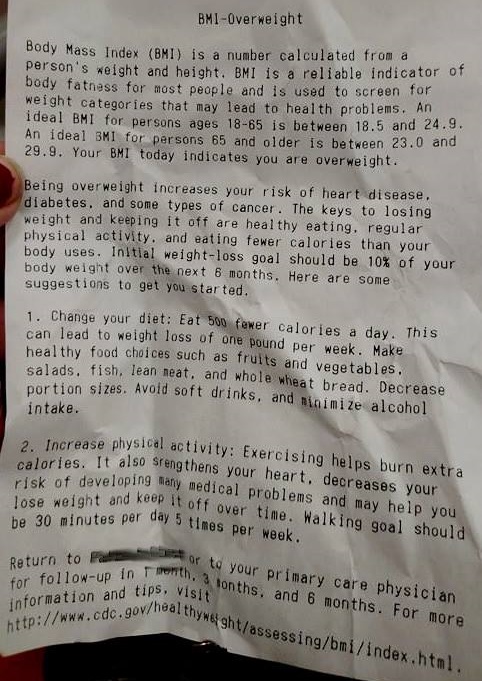Thanks to a colleague’s tip, one counseling technique I sometimes implement is a one-on-one book club of sorts where a patient and I read a book together that is relevant to his or her care. Recently, I have been reading Intuitive Eating with a patient who is working hard to overcome decades of approaching eating from the vantage point of dieting and to build a new relationship with food.
He has impressed me by how open-minded he is to a new way of looking at eating and by how candidly he has shared the thoughts, questions, and concerns that have come to mind during his reading. Now about a third of the way through the book, he reports that he sees himself in many, but certainly not all, of the case studies that the authors present. However, the idea of not depriving himself feels scary. Specifically, he notes that he loves having dessert, but that he is better off skipping it because one brownie so easily turns into four. Besides, he says, health must come into the picture somewhere, so there must be a “but . . .” caveat to the notion of not depriving oneself. He is waiting for the other shoe to drop.
His concerns are common among people who are at the early stages of putting aside the dieting mentality and learning intuitive eating. He is right that we certainly consider health. After all, I am a licensed health care practitioner. Before we take into account the hard science of nutrition though, we have to address the emotions that affect eating.
Sure, physiological mechanisms exist that yield pleasure when we consume foods that are high in fat, sugar, or salt. You are alive to read this because these mechanisms gave your ancestors an evolutionary advantage and they passed them down to you. However, the reason that one brownie turns into four has less to do with physiology and more to do with the morality that gets attached to them.
When we experience guilt for eating a particular food or virtue for abstaining from it, these emotions block us from being able to truly experience and honor the internal cues that our bodies give us regarding our eating. We eat the first brownie, feel guilty for having done so, and say “screw it, today is ruined” and then reach for three more. In essence, the idea of not depriving ourselves feels scary because in our minds it translates to opening the flood gates. In other words, brownies all day, every day.
In reality, that is not how the body tends to operate. When we strip away the morality of food and see our choices on a level playing field, we discover that the appeal of previously-forbidden foods drops considerably. Some days we may want an apple for dessert, other days we may not feel like dessert at all. And what if we go through the question tree of asking ourselves are we hungry, how hungry are we, what texture/temperature/color food do we want, do we feel like something salty, savory, or bitter, and how much of that food do we really need to be satisfied, and we determine that a brownie will indeed do the trick? Then we find the best brownie we can get our hands on, eat it slowly, enjoy every bite, stop when we are feeling satisfied, and know that we can have another one whenever our bodies are asking for one.
Ideally, the hard science of nutrition comes into play after this sort of relationship with food is established. We can talk about the advantages of one kind of cereal over another, or one kind of yogurt over another, or what have you, but we have to take into account the human element. Whole wheat bread is probably a better choice for someone with high cholesterol than is white bread, for example, but if forcing down the whole wheat because it has a better nutritional profile on paper is going to trigger some sort of overeating in search of satisfaction, then he or she is probably better off just having the white bread in the first place and getting his or her soluble fiber someplace else. On the other hand, if the two breads are pretty much equally enjoyable, then sure, he or she is probably better off with the whole wheat.
Learning to eat intuitively involves taking a leap of faith that we can largely trust our bodies to tell us what and how much to eat. Reestablishing that trust involves dialing down the noise of guilt and virtue that makes our internal signals difficult to hear. If you find yourself consuming piles of brownies, or none at all, consider whether or not you are truly listening to your body.

